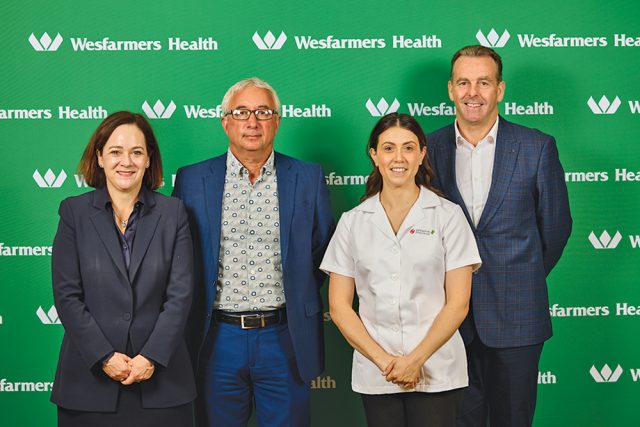Lindsay has been identified as the most at risk electorate in NSW when it comes to health after new data was released.
The inaugural Wesfarmers Health: Australia’s Health Index report was launched in Parliament House by Wesfarmers Managing Director Emily Amos and Assistant Minister for Health and Aged Care Ged Kearney and reported that Lindsay had the highest Index score, which according to Wesfarmers Health pharmacist Amy Jones is due to a number of factors.
“This score is based on the prevalence of the four risk factors associated with cardiometabolic disease, which is Australia’s biggest killer, accounting for one in four adult deaths,” Jones said.
“These risk factors include obesity, high blood pressure, daily smoking and diabetes risk.”
Of these risk factors, Lindsay ranks highly in most – a major concern for the area.
“Residents of Lindsay compared to the rest of NSW have higher rates of obesity at 39.5 per cent compared to the state average of 25.5 per cent,” Jones said.
“Daily smoking rates are also higher at 15.6 per cent compared to the state average 12.9 per cent. Meanwhile, known diabetes rates are reported at 9.9 per cent compared to 6.2 per cent.

“However, it is a more positive story when it comes to high blood pressure rates, with Lindsay having significantly lower blood pressure rates at 18.3 per cent, compared to the state average of 28.5 per cent.”
Jones explained part of the reason behind Lindsay being labelled the most at risk electorate has links to the socio-economic standing of the electorate.
“A primary cause is the relatively low median income for Lindsay. The links between income and health outcomes are well established,” she said.
“Socio-economic factors, as measured by the Index of Relative Socio-Economic Disadvantage (IRSD), play a significant role in these outcomes. Electorates with lower IRSD scores often face challenges like limited healthcare access and lower health literacy, leading to poorer health results.
“In Lindsay, the average family weekly income is $2,177. Comparing that to $3,150 in Bradfield, NSW’s healthiest electorate, shows a disparity of 45 per cent.
“It’s a pattern we see across the country. Accessibility and affordability of health is key to positive health outcomes.”
To curb the risk factors in personal health, Jones recommended a few tips.
“Change of habits and behaviours are key, along with knowing your numbers like your blood pressure and weight,” Jones said.
“High blood pressure for example can be asymptomatic and a leading risk factor in cardiovascular disease. Exercise, eating better and reducing your intake of alcohol and tobacco will all have you heading in the right direction.
“In order to track improvements, a great place to start is to visit one of the SiSU Health Stations, available in Priceline Pharmacies across the country. These checks are free, able to be completed in under five minutes and are a great way to identify risk factors before they escalate, making better health outcomes more accessible. Most importantly you can track your risk and biometrics over time.”

Emily Chate
Emily Chate joined The Western Weekender in 2024, and covers local news - primarily courts and politics. A graduate of the University of Wollongong, Emily has contributed to The Daily Telegraph and worked as a freelance journalist.

